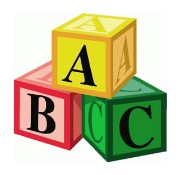Here follows a quick introduction to the principles of Solutions Focus methodology and some of the tools in the SF practitioner's toolkit.
The Principles
Focus on Solutions, Not Problems

Amazing as it may seem, there's often no logical connection between the problem and the solution. In fact, focussing on our worries, concerns and complaints often just takes us further away from what we want.
The Action is in the Interaction
Problems and solutions generally exist between people, not in people. We co-construct them by the actions each of us takes. They're not isolated or belonging only to one party. Change can be made anywhere in the system. Or in other words, I can always do something.
Make Use of What's There

The seeds of a solution are almost always already present. They've been happening before, or in part, or in embryo - however rarely. We sift diligently for what's there that's useful rather then worrying about what's not there or what "ought" to be there.
Seek Possibilities

We mine the past, present and future for resources and possibilities that will take us toward a solution. Any useful story of the past, explanation of what's happening in the present or vision of the future will contain possibilities. The skill lies in recognising and applying them.
Use Small Words

There are books about the theory behind Solutions Focus that contain very big words.
When practicing the method, however, we generally use (and encourage others to use) small easy words rather than big "expert" ones. Big words tend to complicate matters and can even mask those occasions when, heaven forbid, we don't really know what we're talking about.
Every Case is Different

Solutions Focus is an approach to change, not a set of prefigured methods to fit every case. It offers a pragmatic route to finding what works in this instance, with these people. We start afresh every time and construct new, bespoke solutions to fit each situation.
The Tools
The tools below are listed in roughly the order that they're often used when working with individuals or teams. This isn't always the case, of course - every case is different. Sometimes one method or other is skipped entirely. Often we loop back and, for example, do a little more platform building even though we've already envisioned the perfect future.
Build the Platform

The first thing we generally do is build a platform for change. Many people like to start by outlining their problems. The SF pracitioner listens attentively, alert for useful elements appearing. The platform is where we begin our journey in the quest for what works. It is a practical way of turning talk about a problem into talk that builds a platform for a solution and is largely about defining what we want.
Here are some examples of useful platform-building questions:
- What do you want to achieve today?
- How will you know we have made some progress?
- What would be the payoff from solving this problem? What would it help us to get?
- How confident are you that something can be done about this?
- When you have tackled this kind of problem before, what was the most help? What skills and resources did you discover then?
- What in general has been going well for you?
Envision the Perfect Future

Having built the platform, we use the Future Perfect tool to create a vision for what we want. For a moment, we forget our everyday problems, issues and concerns and imagine that everything is suddenly as wonderful as it possibly could be. We imagine this in minute detail using all the senses. Of course, neither life nor work will ever really be perfect, no matter how successful the consultation! But this exercise provides us with a clarity of vision and direction.
The SF practitioner might lead the individual or group in question with the following words:
"Suppose that tonight you go to bed - and go to sleep as usual - and during the night a miracle happens - and the problem vanishes - and the issues that concern you are resolved - but you're asleep so you don't know the miracle has happened. When you wake up tomorrow what will be the first things that tell you the miracle has happened? How will you know that the transformation has occurred?"
Find Counters

Counters are our "what's already there" stack. It's very likely these will prove useful in the building of solutions. We want to collect as many counters as possible. They include:
- Examples of the solution happening already - gold dust!
- Evidence of parts of the solution happening - good building materials.
- Skills and resources that will help create a solution.
- Cooperation from others involved.
Affirm What is Helping

The SF practitioner will often seek to affirm (i.e. play back) any counters discovered - anything that's going well, any skills, resources, valuable information or generosity uncovered.
This includes giving compliments and encouraging others to do so - both to compliment each other and, even more difficult for us Brits, to compliment themselves.
Place Yourself on a Scale

Now that both the current platform (where we're at) and the perfect future (where we want to be) are defined, the SF practitioner will ask the participants (or the individual being coached) to place themselves on a scale between 1 and 10, where 1 is that the situation is rock bottom, absolutely awful, and 10 is that the perfect future has already been reached. This is entirely subjective and it's of little significance which number a participant chooses, so long as it makes sense to him or her (though the SF practitioner may say a few gentle words to suggest that "1" isn't very likely - after all, the person is already doing some Solutions Focus work on the issue!).
Set Small Action Steps

Having placed themselves on the scale, participants are then asked to think of some action steps that would move them one or even half a point further up the scale. These are steps that are small, specific and measurable, that can be started the following day and that it's easy to judge whether they've been completed or not.
This is an example of an action step that doesn't meet the criteria:
"Tomorrow, I'm going to transform my relationship with Sheila."
This is an example of an action step that does:
"Tomorrow, I'm going to compliment Sheila on that great piece of work she did last week and apologise for my behaviour last Thursday."
More on Solutions Focus
If you're interested in studying the Solutions Focus methodology further try this book.